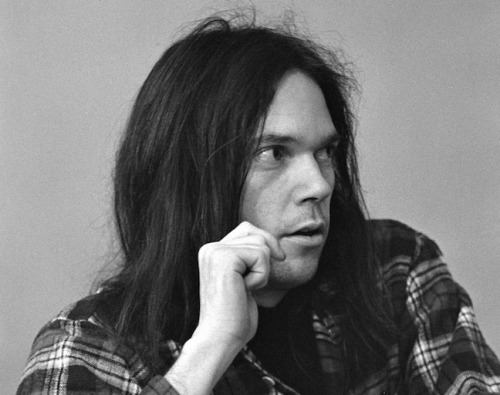
Cool clip with Neil Young talking about the making of his album Harvest.
-– A Days of the Crazy-Wild blog post: sounds, visuals and/or news –-

Cool clip with Neil Young talking about the making of his album Harvest.
-– A Days of the Crazy-Wild blog post: sounds, visuals and/or news –-
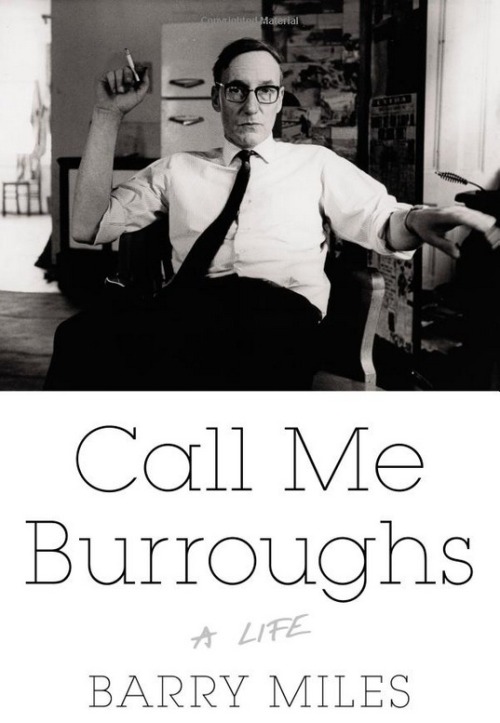
This Tuesday sees the publication of British writer Barry Miles biography of William Burroughs, “Call Me Burroughs.”
Reviewing the book in Bookforum,Jeremy Lybarger writes:
William S. Burroughs lived the kind of life few contemporary American novelists seek to emulate. A roll call of his sins: He was a queer and a junkie before being either was hip; he was a deadbeat father and an absent son; he was a misogynist, a gun lover, and a drunk; he was a guru of junk science and crank religion; he haunted the most sinister dregs of Mexico City, Tangier, Paris, London, and New York; he was an avant-garde writer with little affection for plot and none at all for epiphany; he wore his Americanness like a colostomy bag, shameful but essential. When he died at age 83 in 1997, his last words were: “Be back in no time.” At least he wasn’t a liar.
This year is the centenary of Burroughs’s birth and the occasion for Barry Miles’s new biography, Call Me Burroughs: A Life. Miles specializes in Beat literature and is arguably the definitive biographer of Ginsberg and Kerouac, as well as a devout Burroughsian whose 1993 book, William Burroughs: El Hombre Invisible, remains a mainstay of academic bibliographies. Call Me Burroughs eclipses everything else he’s done in terms of breadth, erudition, and sheer narrative combustion. If you’re one for literary gamesmanship, note that it also trumps Ted Morgan’s Literary Outlaw (1998) as the authoritative record of Burroughs’s life.
Let me suggest that a fair barometer of biographical writing is how well it resists hyperbole. Miles is successful in this regard, which is impressive given that Burroughs’s life yields so much that is extreme. There’s the foggy childhood incident in which his beloved nurse either aborted her baby in front of him or forced him to suck her boyfriend’s penis (years of psychoanalysis never fully recovered the details). Or there’s the murder of Burroughs’s friend David Kammerer, about which Burroughs “showed no emotion.” Or there’s the afternoon that Burroughs, desperately in love with a teenage hustler but also desperately possessive, sawed off his own finger joint with poultry shears in an act of lurid chivalry. Or there’s his smorgasbord of addictions—to heroin, alcohol, marijuana, Eukodol, morphine. Above all, there’s the horrific event he spent endless doped years and infinite harrowing pages trying to exorcize: the shooting incident in which he killed his common-law wife, Joan Vollmer, in Mexico City, 1951.
Joan Vollmer is something like the Tokyo Rose of Beat literature; her presence is subliminal but toxic…
For more, head to Bookforum.
Burroughs on using heroin:
Burroughs reads his novel, “Junky”:
-– A Days of the Crazy-Wild blog post: sounds, visuals and/or news –-

This morning (January 25, 2014) The National performed “Don’t Swallow the Cap” on “CBS This Morning”.
Check it out:
-– A Days of the Crazy-Wild blog post: sounds, visuals and/or news –-
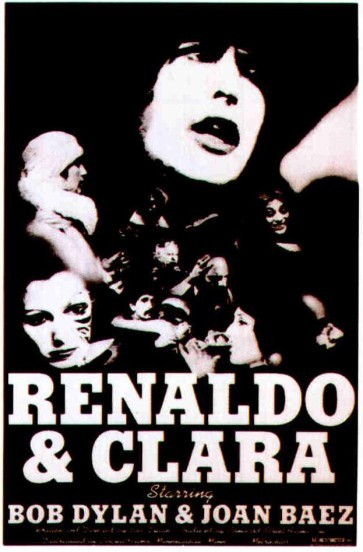
Thirty-six years ago, on January 25, 1978, Bob Dylan’s epic four-plus hour film “Renaldo & Clara” began a limited theatrical run, opening in New York City and Los Angeles.
The film screened in a handful of additional cities and then was pulled. Later that year a short version was released. I saw that version, found it very intriguing but also quite confusing.
Janet Maslin’s January 26, 1978 review of the film in the New York Times begins like this:
THERE’S an insolence about “Renaldo and Clara,” the four-hour film written and directed by Bob Dylan and featuring members of his Rolling Thunder Revue, that is not easily ignored. Mr. Dylan, who has a way of insinuating that any viewer who doesn’t grasp the full richness of his work must be intellectually deficient or guilty of some failure of nerve, has seen fit to produce a film that no one is likely to find altogether comprehensible. Yet for anyone even marginally interested in Mr. Dylan—and for anyone willing to accept the idea that his evasiveness, however exasperating, is a crucial aspect of his finest work — “Renaldo and Clara” holds the attention at least as effectively as it tries the patience.
No knowledge of Mr. Dylan or his history is supposed to be central to an understanding of the film, but it nevertheless trades heavily upon his past. The singer David Blue, playing himself, talks about the artistic climate of Greenwich Village when Mr. Dylan first arrived there, and Joan Baez is rather coyly cast as Mr. Dylan’s former lover. Mr. Dylan, even more coyly, is cast as someone other than himself, a very vague figure named Renaldo.
Read more here.
Director: Bob Dylan
Cast:
Bob Dylan … Renaldo
Sara Dylan … Clara
Joan Baez … Woman in White
Ronnie Hawkins … Bob Dylan
Jack Elliott … Longheno de Castro
Harry Dean Stanton … Lafkezio
Bob Neuwirth … The Masked Tortilla
Allen Ginsberg … The Father
David Mansfield … The Son
Helena Kallianiotes … Herself
Rubin ‘Hurricane’ Carter … Himself
T-Bone Burnett … The Inner Voice
Joan Baez and Dylan in “Renaldo & Clara”:
“One More Cup of Coffee”:
An hour plus of the film:
Check out this cool post about the film at the Johanna’s Visions site.
-– A Days of the Crazy-Wild blog post: sounds, visuals and/or news –-
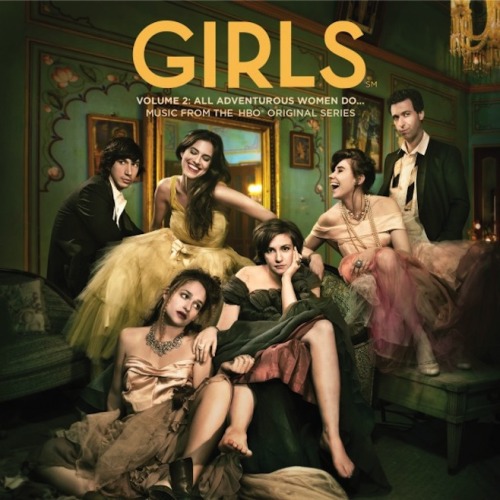
Crazy Gigamesh remix of the awesome 2003 Cat Power track, “Free.”
Check out “Free (Remix),” which is included is on the new soundtrack for “Girls.”
Thanks Stereogum!

Great article in the New York Times today on Byrds co-founder Gene Clark, his brilliant album No Other, and the indie rockers who are currently playing the album in full on tour.
Jon Pareles writes:
He [Clark] had found stardom early. Clark moved to Los Angeles to join the New Christy Minstrels SaveFrom.net, a mainstay of the early-1960s “Hootenanny” era. But after hearing and absorbing the Beatles, he started the Byrds with Jim (later Roger) McGuinn and David Crosby and was the main songwriter for the band’s first two albums, as well as a frequent lead singer. Clark was also the main songwriter of the Byrds’ “Eight Miles High.”
Clark has never lacked admirers among musicians. Bob Dylan singled him out with early praise: “He’s got something to say, and I’m listening,” Mr. Dylan said in 1965. Clark’s voice always held a sense of sorrow, and his songs had a philosophical undercurrent, musing on time, faith and solitude.
Check out the rest of the article here.
Check out the entire album:
-– A Days of the Crazy-Wild blog post: sounds, visuals and/or news –-

Aimee Mann and Ted Leo have made an album together, The Both, due out April 15, 2014.
Here’s a song off it, “Milwaukee.”
-– A Days of the Crazy-Wild blog post: sounds, visuals and/or news –-

Bob Dylan’s next “Bootleg Series” album could be based on the Blood On The Tracks sessions, according to a report at Rolling Stone today.
Rolling Stone’s Andy Greene spoke to what he calls “a source close to the Dylan camp” about possible future “Bootleg Series” releases.
“There’s a couple of things on our minds, but the natural next one is Blood on the Tracks,” the source is quoted as saying.
The sessions for Blood On The Tracks took place in New York and Minneapolis between Sept. 16, 1974 and December 30, 1974.
“During the first couple of days in New York, Bob played the songs solo on acoustic guitar,” the source told Rolling Stone. “They’re very different than anything that’s been heard before and they’re very special.”
For the rest of this story, head over to Rolling Stone.
For my posts on Blood on the Tracks with outtakes, head here and here and here.
-– A Days of the Crazy-Wild blog post: sounds, visuals and/or news –-
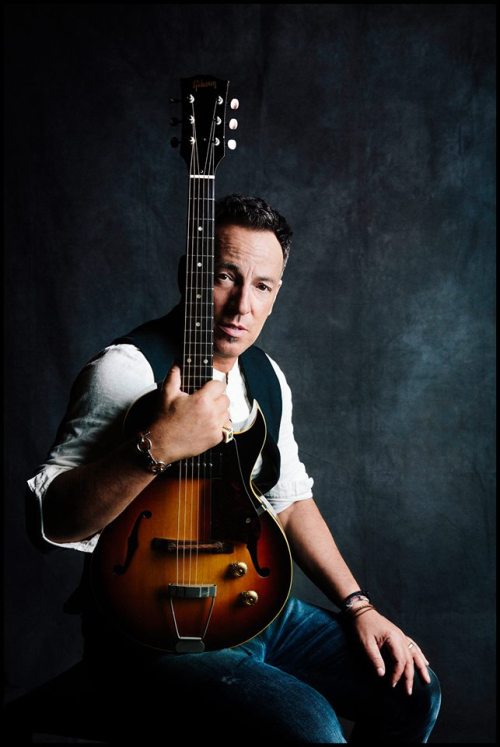
New video for “Just Like Fire Would” off High Hopes.
-– A Days of the Crazy-Wild blog post: sounds, visuals and/or news –-

Neil Young was given the President’s Merit Award by the 56th GRAMMY Awards Producers & Engineers Wing the night of January 21, 2014. The event took place at The Village recording studio in L.A.
Below is Neil Young’s speech as transcribed by Rolling Stone:
So this is a cool night because we’re all here together. I know almost everybody here. If I don’t know you, I thought I did when I saw you. It really is great. A lot of us, you know, producers and engineers –I’m kind of a producer, partially, an engineer, I’m not really good at either one. It’s hurt my records in the past. We’re performance-oriented: technical things don’t matter that much.
That’s only one way of making records. A lot of you out here are craftsmen: just beautiful records, and take great care with every note. And I know I’m not one of them. I like to capture the moment. I like to record the moment. I like to get the first time that I sung the song. I like to get the first time the band plays the song. So there’s a lot of compromises you make to get that feeling, but in the long run, that’s where the pictures are when I hear my words and when I see the pictures while I’m listening. So that’s what we try to record.
Recording is so important. We think about the equipment, we think about what are we using, what do we have, what are we recording on, what are we singing through, where is it going, how long is the wire? Why is that piece of shit in the wire between me and where I’m going? Get that out! Don’t join the wire together, get one wire, because every time you go through one of those pieces of crap, something happens. We paid big bucks for this place, and we’re going to use every bit of it. And we’re not going to use what we don’t want. Thank you. Great recording here.
I did record here! I think I recorded a few tracks here a long time ago. There’s a song, “Like a Hurricane,” that I didn’t record here. But I couldn’t sing at that time, when I recorded that, because I had just had some sort of operation. They told me to stop for a month, but I couldn’t stop the music, so in my studio at home, me and Crazy Horse got together and we played this track. It was about fifteen minutes long, because I’d just written it the night before. I recorded it on an acoustic – now let’s play with all these other instruments and it’s going to be great.
So we got the instruments out and we played it once. And we screwed it up really badly at first. If you listen to the record, you can tell we screwed it up. We cut it off. It just starts out of nowhere. But that was over – now we’re in the record. And it’s divided, it doesn’t matter how cool and together the beginning was, but where it went as soon as it started. So we shortened a little bit.
Then I was here at this place, in 1974 or something, and I said, “You know, a couple of weeks ago, when I couldn’t sing – ” By the way, I know I can’t sing. I mean I couldn’t make a sound. And of course, this was back in the day, way back there. So I’m saying, “We have this tape here. I brought this piece to multitrack. We’ve never played it. I’m going to sing it, because I never got a chance to sing it.”
So we put it on, and he played back about ten seconds, and I said, “Okay, stop. Everything was working, right? We heard everything? Okay, there’s no reason to listen to it. Because I was there – I know what it is. And it’s on the tape. We don’t have to listen to it. Let’s not wipe the shit off the tape listening to it. Let’s record while the stuff is still on – let’s listen to what’s there, and record it to a two-track while it’s still there.” Because if you listen over and over and over again, it goes away, bye-bye! Because the tape doesn’t like to rub over this head, and then part of it goes away, it’s terrible. That bothers me every time the tape plays. So I never hardly ever listen!
Okay, they put the tape on and I went out and I talk: “Am I there?” Yes. “Good. Okay. Record. Number one. Just record all the time – that’s why we’re here. Don’t not record at all, ever. Record! It’s a studio! Record! Practice at home! The red button’s not that scary, really not.”
So we press the button and they start the tape, and I start singing the song. It’s long, so it’s like, four or five verses over and over again. So I sing one verse, and then the other verse – there’s only two verses, so I just keep singing them, one after the other. Later on, we can cut it down. The other guys aren’t here, and I hear the harmony part, so I want to sing the harmonies now. We did the harmonies, so we did three tracks, three times through, one time on each track. We had all this stuff, and it was the first time I ever heard it. The first time I ever listened to “Like a Hurricane.” And I was hearing it, and I was singing it, and I sang the harmony, and I sang the other harmony, and then we mixed it. So it was like the five-and-sixth time, and then we mixed it. There’s a message in there somewhere.
My memory of this place is what it is, that we do records like that. The idea is, for me, to try to get magic. Who knows where the hell it’s coming from? I don’t – so please record. It’s expensive to sit here and not push the button.
I know who you people are. I know you’re animals, and I know some of you are very funny. Some of you are just dry – never laugh. “Good morning.” I love you all people, because I know what you’re doing. I know how crazy you are about all the things that I don’t care about. Sometimes you make great records, and it’s fantastic. They’re not like my records – sometimes I can’t feel them, but I really appreciate them. No, sometimes I can feel them and I go, “Holy shit, how did they do that? How did they make that record? I know they layered it – it’s not like a documentary where something happens and you take a picture, cinema verite. This is a movie: somebody created all the scenes, and there was the dialogue, and then they did the dialogue again, and there was the foley to do the sounds, and they did all the stuff, and everything’s perfect – but it’s still good.”
There’s nothing wrong with that – it’s just a different way of doing it than I could ever do, because I have so little ability to do that, that it would really suck: over and over again, getting it right. That’s why I’m flat, that’s why it doesn’t matter that there’s bad notes. That doesn’t mean it’s not production – it just means it’s the kind of production that we do.
Some people are here tonight that I’ve worked with over the ages that are just really incredible people. Al Schmitt’s here tonight. And Niko Bolas, he’s here. John Hanlon is here. I really appreciate that these guys are – I know you really appreciate, especially Al, because he’s the father of what’s going on here, and he’s still here. He has staying power. And he was recording the way that I want to record now. I’m going to make a record with Al – we’re talking about making a record together where there’s only one mic, but we do a huge orchestra. And when we finish doing that performance, and every guy’s standing the right length from the mic: the background vocal is like “hey-hey-hey,” and of course I’m up here, but they’re right there, so it sounds like that there. So we’re going to do it that way. We’re not going to mix it: we’re going to do it, and mix it while we do it. Everybody can get in the right place, and if it’s not righ – -well, we’ll move the bass up. Move the bass closer. It’s not loud enough? Move the amp closer, then! It sounds good, but it’s just too quiet, so move it up. Move it in, and the drums? Leave it over there, go back farther.
Do you know how fun that is to do? That is so much fun. It’s like playing music – it’s not making music, it’s playing it. I love doing these things. And I’m anxious to do something I’ve never done before, because there were great records made that way. There’s something that happens with one mic. When everyone sings into one mic, when everybody plays into the same mic: I’ve just never been able to do that, with some rare instances like when I record in a recording booth from a 1940s state fair. I got that sound by closing myself into a telephone booth. And I notice, it sounds just like an old record. And I like the sound of old records! I’ve always loved that.
So all I’m trying to say is I’m one of you. You honor me, you’re honoring yourself. It’s not me: it’s you. It’s what we do. Thank you so much. Digital. Digital is not bad. But Xerox is not good. I always like to say Picasso was really happy to see original Picassos everywhere, but when he went into some places and saw Xeroxes of Picassos, it didn’t make him as happy, because he thought people thought that we was making those things. The thing we do is, we make great stuff in the studio and then we kiss its ass goodbye, because nobody’s ever going to hear it. That’s unfortunate, and it didn’t use to be that way. That’s something that happened to us – that’s an injury we sustained, and it deeply hurt us. So the time has come for us to recover and to bring music back to the people in a way that they can recognize it in their souls – through the window of their souls, their ears. So they can feel and vibrate and so that they can get goosebumps. We cherish those fucking goosebumps. We really need those.
Being impressed by something, and how cool it is, and how sharp it is, and how snappy it is, is one thing, and that translates into almost any media. But when you’re singing something very soulful from your heart, and the echo is perfect and everything’s great and you’re using maybe an acoustic chamber and everything sounds great. And then you listen to it and you love it, but you hear it somewhere else and it’s gone – that’s terrible. We don’t like that. Not many of us like that, we’re not happy about it. So we’re trying to change that, and we’re trying to make it better. We’re trying to make music sound technically better, and that’s what I want to do. So we have a player that plays whatever the musicians made digitally, and that’s going to come out. We’re announcing that at SXSW, we’re introducing it, it’s called Pono, and that’s my commercial, thank you very much.
-– A Days of the Crazy-Wild blog post: sounds, visuals and/or news –-